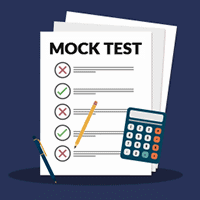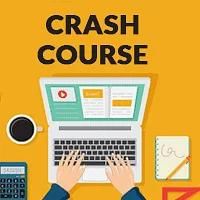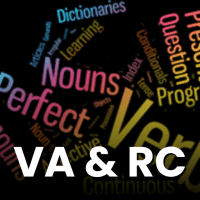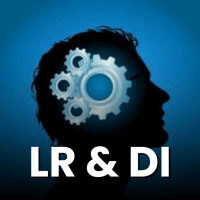CAT Exam > CAT Questions > Arrange the sentences A, B, C and D to form ...
Start Learning for Free
Arrange the sentences A, B, C and D to form a logical sequence between sentences 1 and 6.
1. Intensity of competition in an industry is neither a matter of coincidence nor bad luck.
A. The collective strength of these forces determines the ultimate profit potential in the industry where profit potential is measured in terms of long run returns on invested capital.
B. Rather, competition in an industry is rooted in its underlying economic structure and goes well beyond the behaviour of current competitors.
C. Not all industries have the same potential.
D. The state of competition in an industry depends on five basic competitive forces.
6. They differ fundamentally in their ultimate profit potential as the collective strength of the forces differ.
- a)CDBA
- b)DCAB
- c)BDAC
- d)ABDC
- e)ADCB
Correct answer is option 'C'. Can you explain this answer?
Most Upvoted Answer
Arrange the sentences A, B, C and D to form a logical sequence betwee...
Understanding the Sequence
To logically arrange the sentences between 1 and 6, it is crucial to identify the flow of ideas regarding competition in industries. The goal is to create a coherent narrative that connects the concepts.
Sentence Breakdown
- Sentence 1 establishes the premise that competition is not accidental or merely due to misfortune.
- Sentence 6 concludes that industries vary in profit potential based on underlying factors.
Connecting the Sentences
- D: The state of competition in an industry depends on five basic competitive forces.
- This sentence introduces the main idea that the competitive landscape is shaped by specific forces, setting the stage for deeper exploration.
- C: Not all industries have the same potential.
- Following D, this sentence emphasizes the variability across industries, hinting at the differences in profit potential based on competitive forces.
- B: Rather, competition in an industry is rooted in its underlying economic structure and goes well beyond the behaviour of current competitors.
- This sentence elaborates on the importance of economic structure, explaining why competition is not merely about current players but is influenced by deeper economic factors.
- A: The collective strength of these forces determines the ultimate profit potential in the industry where profit potential is measured in terms of long run returns on invested capital.
- Finally, this sentence synthesizes the previous points by linking the competitive forces to the profit potential, fulfilling the narrative's purpose.
Final Arrangement: CDBA
The correct order is CDBA, as it logically transitions from the concept of competitive forces to the implications of those forces on industry profit potential. Hence, the correct answer is option 'C'.
To logically arrange the sentences between 1 and 6, it is crucial to identify the flow of ideas regarding competition in industries. The goal is to create a coherent narrative that connects the concepts.
Sentence Breakdown
- Sentence 1 establishes the premise that competition is not accidental or merely due to misfortune.
- Sentence 6 concludes that industries vary in profit potential based on underlying factors.
Connecting the Sentences
- D: The state of competition in an industry depends on five basic competitive forces.
- This sentence introduces the main idea that the competitive landscape is shaped by specific forces, setting the stage for deeper exploration.
- C: Not all industries have the same potential.
- Following D, this sentence emphasizes the variability across industries, hinting at the differences in profit potential based on competitive forces.
- B: Rather, competition in an industry is rooted in its underlying economic structure and goes well beyond the behaviour of current competitors.
- This sentence elaborates on the importance of economic structure, explaining why competition is not merely about current players but is influenced by deeper economic factors.
- A: The collective strength of these forces determines the ultimate profit potential in the industry where profit potential is measured in terms of long run returns on invested capital.
- Finally, this sentence synthesizes the previous points by linking the competitive forces to the profit potential, fulfilling the narrative's purpose.
Final Arrangement: CDBA
The correct order is CDBA, as it logically transitions from the concept of competitive forces to the implications of those forces on industry profit potential. Hence, the correct answer is option 'C'.
Free Test
FREE
| Start Free Test |
Community Answer
Arrange the sentences A, B, C and D to form a logical sequence betwee...
Statement B supports the point mentioned in statement 1
Statement D explains the state of competition. Hence, it follows statement A
'these forces' in statement A is referring to the 'five basic competitive forces' mentioned in statement D. Hence, A follows D
Statement C mentions that the points mentioned in statement A need not have to be true in all the industries.
Hence, the correct sequence is 1BDAC6

|
Explore Courses for CAT exam
|

|
Similar CAT Doubts
Question Description
Arrange the sentences A, B, C and D to form a logical sequence between sentences 1 and 6.1. Intensity of competition in an industry is neither a matter of coincidence nor bad luck.A. The collective strength of these forces determines the ultimate profit potential in the industry where profit potential is measured in terms of long run returns on invested capital.B. Rather, competition in an industry is rooted in its underlying economic structure and goes well beyond the behaviour of current competitors.C. Not all industries have the same potential.D. The state of competition in an industry depends on five basic competitive forces.6. They differ fundamentally in their ultimate profit potential as the collective strength of the forces differ.a)CDBAb)DCABc)BDACd)ABDCe)ADCBCorrect answer is option 'C'. Can you explain this answer? for CAT 2025 is part of CAT preparation. The Question and answers have been prepared according to the CAT exam syllabus. Information about Arrange the sentences A, B, C and D to form a logical sequence between sentences 1 and 6.1. Intensity of competition in an industry is neither a matter of coincidence nor bad luck.A. The collective strength of these forces determines the ultimate profit potential in the industry where profit potential is measured in terms of long run returns on invested capital.B. Rather, competition in an industry is rooted in its underlying economic structure and goes well beyond the behaviour of current competitors.C. Not all industries have the same potential.D. The state of competition in an industry depends on five basic competitive forces.6. They differ fundamentally in their ultimate profit potential as the collective strength of the forces differ.a)CDBAb)DCABc)BDACd)ABDCe)ADCBCorrect answer is option 'C'. Can you explain this answer? covers all topics & solutions for CAT 2025 Exam. Find important definitions, questions, meanings, examples, exercises and tests below for Arrange the sentences A, B, C and D to form a logical sequence between sentences 1 and 6.1. Intensity of competition in an industry is neither a matter of coincidence nor bad luck.A. The collective strength of these forces determines the ultimate profit potential in the industry where profit potential is measured in terms of long run returns on invested capital.B. Rather, competition in an industry is rooted in its underlying economic structure and goes well beyond the behaviour of current competitors.C. Not all industries have the same potential.D. The state of competition in an industry depends on five basic competitive forces.6. They differ fundamentally in their ultimate profit potential as the collective strength of the forces differ.a)CDBAb)DCABc)BDACd)ABDCe)ADCBCorrect answer is option 'C'. Can you explain this answer?.
Arrange the sentences A, B, C and D to form a logical sequence between sentences 1 and 6.1. Intensity of competition in an industry is neither a matter of coincidence nor bad luck.A. The collective strength of these forces determines the ultimate profit potential in the industry where profit potential is measured in terms of long run returns on invested capital.B. Rather, competition in an industry is rooted in its underlying economic structure and goes well beyond the behaviour of current competitors.C. Not all industries have the same potential.D. The state of competition in an industry depends on five basic competitive forces.6. They differ fundamentally in their ultimate profit potential as the collective strength of the forces differ.a)CDBAb)DCABc)BDACd)ABDCe)ADCBCorrect answer is option 'C'. Can you explain this answer? for CAT 2025 is part of CAT preparation. The Question and answers have been prepared according to the CAT exam syllabus. Information about Arrange the sentences A, B, C and D to form a logical sequence between sentences 1 and 6.1. Intensity of competition in an industry is neither a matter of coincidence nor bad luck.A. The collective strength of these forces determines the ultimate profit potential in the industry where profit potential is measured in terms of long run returns on invested capital.B. Rather, competition in an industry is rooted in its underlying economic structure and goes well beyond the behaviour of current competitors.C. Not all industries have the same potential.D. The state of competition in an industry depends on five basic competitive forces.6. They differ fundamentally in their ultimate profit potential as the collective strength of the forces differ.a)CDBAb)DCABc)BDACd)ABDCe)ADCBCorrect answer is option 'C'. Can you explain this answer? covers all topics & solutions for CAT 2025 Exam. Find important definitions, questions, meanings, examples, exercises and tests below for Arrange the sentences A, B, C and D to form a logical sequence between sentences 1 and 6.1. Intensity of competition in an industry is neither a matter of coincidence nor bad luck.A. The collective strength of these forces determines the ultimate profit potential in the industry where profit potential is measured in terms of long run returns on invested capital.B. Rather, competition in an industry is rooted in its underlying economic structure and goes well beyond the behaviour of current competitors.C. Not all industries have the same potential.D. The state of competition in an industry depends on five basic competitive forces.6. They differ fundamentally in their ultimate profit potential as the collective strength of the forces differ.a)CDBAb)DCABc)BDACd)ABDCe)ADCBCorrect answer is option 'C'. Can you explain this answer?.
Solutions for Arrange the sentences A, B, C and D to form a logical sequence between sentences 1 and 6.1. Intensity of competition in an industry is neither a matter of coincidence nor bad luck.A. The collective strength of these forces determines the ultimate profit potential in the industry where profit potential is measured in terms of long run returns on invested capital.B. Rather, competition in an industry is rooted in its underlying economic structure and goes well beyond the behaviour of current competitors.C. Not all industries have the same potential.D. The state of competition in an industry depends on five basic competitive forces.6. They differ fundamentally in their ultimate profit potential as the collective strength of the forces differ.a)CDBAb)DCABc)BDACd)ABDCe)ADCBCorrect answer is option 'C'. Can you explain this answer? in English & in Hindi are available as part of our courses for CAT.
Download more important topics, notes, lectures and mock test series for CAT Exam by signing up for free.
Here you can find the meaning of Arrange the sentences A, B, C and D to form a logical sequence between sentences 1 and 6.1. Intensity of competition in an industry is neither a matter of coincidence nor bad luck.A. The collective strength of these forces determines the ultimate profit potential in the industry where profit potential is measured in terms of long run returns on invested capital.B. Rather, competition in an industry is rooted in its underlying economic structure and goes well beyond the behaviour of current competitors.C. Not all industries have the same potential.D. The state of competition in an industry depends on five basic competitive forces.6. They differ fundamentally in their ultimate profit potential as the collective strength of the forces differ.a)CDBAb)DCABc)BDACd)ABDCe)ADCBCorrect answer is option 'C'. Can you explain this answer? defined & explained in the simplest way possible. Besides giving the explanation of
Arrange the sentences A, B, C and D to form a logical sequence between sentences 1 and 6.1. Intensity of competition in an industry is neither a matter of coincidence nor bad luck.A. The collective strength of these forces determines the ultimate profit potential in the industry where profit potential is measured in terms of long run returns on invested capital.B. Rather, competition in an industry is rooted in its underlying economic structure and goes well beyond the behaviour of current competitors.C. Not all industries have the same potential.D. The state of competition in an industry depends on five basic competitive forces.6. They differ fundamentally in their ultimate profit potential as the collective strength of the forces differ.a)CDBAb)DCABc)BDACd)ABDCe)ADCBCorrect answer is option 'C'. Can you explain this answer?, a detailed solution for Arrange the sentences A, B, C and D to form a logical sequence between sentences 1 and 6.1. Intensity of competition in an industry is neither a matter of coincidence nor bad luck.A. The collective strength of these forces determines the ultimate profit potential in the industry where profit potential is measured in terms of long run returns on invested capital.B. Rather, competition in an industry is rooted in its underlying economic structure and goes well beyond the behaviour of current competitors.C. Not all industries have the same potential.D. The state of competition in an industry depends on five basic competitive forces.6. They differ fundamentally in their ultimate profit potential as the collective strength of the forces differ.a)CDBAb)DCABc)BDACd)ABDCe)ADCBCorrect answer is option 'C'. Can you explain this answer? has been provided alongside types of Arrange the sentences A, B, C and D to form a logical sequence between sentences 1 and 6.1. Intensity of competition in an industry is neither a matter of coincidence nor bad luck.A. The collective strength of these forces determines the ultimate profit potential in the industry where profit potential is measured in terms of long run returns on invested capital.B. Rather, competition in an industry is rooted in its underlying economic structure and goes well beyond the behaviour of current competitors.C. Not all industries have the same potential.D. The state of competition in an industry depends on five basic competitive forces.6. They differ fundamentally in their ultimate profit potential as the collective strength of the forces differ.a)CDBAb)DCABc)BDACd)ABDCe)ADCBCorrect answer is option 'C'. Can you explain this answer? theory, EduRev gives you an
ample number of questions to practice Arrange the sentences A, B, C and D to form a logical sequence between sentences 1 and 6.1. Intensity of competition in an industry is neither a matter of coincidence nor bad luck.A. The collective strength of these forces determines the ultimate profit potential in the industry where profit potential is measured in terms of long run returns on invested capital.B. Rather, competition in an industry is rooted in its underlying economic structure and goes well beyond the behaviour of current competitors.C. Not all industries have the same potential.D. The state of competition in an industry depends on five basic competitive forces.6. They differ fundamentally in their ultimate profit potential as the collective strength of the forces differ.a)CDBAb)DCABc)BDACd)ABDCe)ADCBCorrect answer is option 'C'. Can you explain this answer? tests, examples and also practice CAT tests.

|
Explore Courses for CAT exam
|

|
Signup to solve all Doubts
Signup to see your scores go up within 7 days! Learn & Practice with 1000+ FREE Notes, Videos & Tests.
























